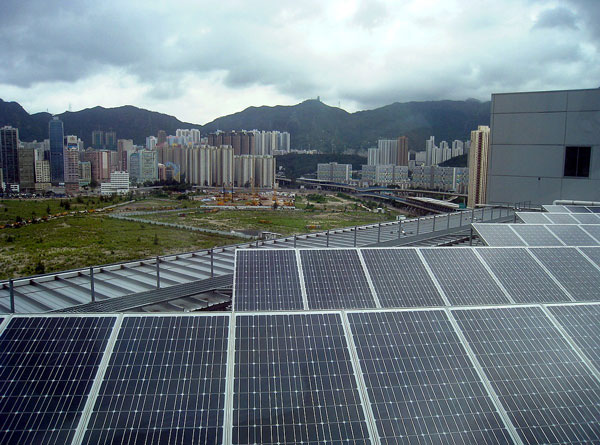Renewable Energy Job Creation
The solar industry is a job-creating powerhouse for every sector of the economy. The solar industry in the United States employed more than 250,000 people in 2020 in jobs like installation, manufacturing, sales and distribution. This includes jobs that typically pay well above the national median wage and bring growth to urban and rural America.
Impact on Local Economies
Local benefits from solar energy projects are substantial. One of the ways in which a solar farm project can drive economic growth is through job creation, the construction of a utility-scale solar farm can employ up to few hundred people, many of which from the local community ranging from construction workers to electrical engineers. The Perryman Group found that building solar in Texas added $2.5 billion in gross product and around 9,000 jobs each year throughout a decade.
Technological Improvements and Efficiency
Solar panels are also seeing increased adoption as improvements in photovoltaic (PV) technology has made solar panels more efficient and cheaper. One such case is the implementation of bifacial solar panels, which collect sunlight from the front and rear sides and have boosted energy yield by 10-20% compared to conventional panels. This efficiency has driven down the price of solar energy and made it cost-competitive with "dirty" fossil fuels as well as a very attractive investment for businesses.
Secure and Independent Energy
One renewable resource solar energy Solar energy can be harnessed for energy independence and to reduce reliance on imported fuels throughout the U.S. In places such as California, which gets 19% of its electricity from solar, solar energy has helped to anchor energy prices and ensure that the power stays on, even at peak demand times.
Solar Farms in North Carolina
In North Carolina, solar farms show us the difference solar energy can make in job creation and economic development. It has the second most solar capacity of any state in the U.S. In the case of solar farms, such as this 80 MW Conetoe facility, they've also created a few jobs and an extra source of tax revenue for local governments. New projects pay landowners for the use of their land, showing that solar's economic benefits extend from landowners to construction contractors and beyond.

Solar Installations and Property Values
Solar panels go beyond sustainability alone to become a financially wise choice as well. Solar installations are known to increase the value of a home for owners that invest. Homes with solar panels, based on the study of Lawrence Berkeley National Laboratory, were priced about 4.1% more in home value compared to homes without solar systems.
The competitiveness of the Market will enhance
One of the primary reasons for this is that homebuyers like solar and homes with solar installations sell faster than non-solar homes. A study from the National Renewable Energy Laboratory of 22,000 homes found that when homeowners either buy or lease solar-equipped homes, those homes sold an average of 20% faster than those without solar. This aesthetic appeal, which is tied to potential energy savings and has become increasingly important with the shift towards a green lifestyle among homeowners.
Long-term Savings Impact
Solar installations have a follow-on value added well beyond initial sales. The typical homeowner saves about $1,000 per year on their electricity costs by using solar panels for the duration of their use. Not only that, but this cost savings add up which increases the total value of the investment in your solar technology.
Regional Variations
Every state is different when it comes to the effect of solar installations on property values. In sun-splashed areas like Arizona and California, the value of your home can increase up to 5.4%. These states incentivize solar more, which are included into the homeowners solar savings.
New Jersey Solar Market
State policies in New Jersey have been very encouraging in terms of spurring a significant amount of solar installations. Suggestion Off of the back of lower utility bills homeowners are also actively participating in state-sponsored incentive programs the SREC (Solar Renewable Energy Certificate) market, a government-run program that enables homeowners to sell certificates generated by their home solar systems. This compound of financial benefits has positioned New Jersey as one of the fastest-growing solar markets in the country, simultaneously driving property values up significantly in many local communities.
Solar Investments Boosting Local Economies
Investments solar energy play major role in boosting local economy. Municipal investment in solar projects allows communities to take advantage of jobs growth and improved public infrastructure, while supporting local enterprises.
Solar panels create more and better jobs
Solar is very labor intensive in construction and maintenance generates a lot of jobs. One utility-scale solar farm, can provide work to hundreds of workers for a few months. According to The Solar Foundation, the solar industry is an even bigger job creator, boasting a 20 times higher job growth rate than the U.S. economy as a whole over recent decades.
Infrastructure Development
There are the general maintenance and upgrades to the local infrastructure that can be tied to the introduction of solar energy - roads, bridges or the electrical grid itself. These upgrades help the authentic development of further commercial ventures through expanding local connectivity, and ensuring an even more dependable and secure power supply. In Clark County, Nevada, solar investment has resulted in grid upgrades that have prepared local systems to handle more solar.
Boost to Local Businesses
The economic activity associated with solar projects helps local businesses. Great sources of demand for suppliers, service providers, retail businesses, from both the workers involved in the projects and the broader economic stimulation. Locally, one need only point to Boulder, Colorado, and its solar incubator and associated businesses that have seen their revenues grow.
Rural Solar Power in Texas
Solar investments are also driving revitalization in rural Texas communities. In Pecos County, an 80-megawatt project not only supported more than 300 construction jobs, but also provided a lift to the local economy by generating additional sales and business volume in the area. We have long-term economic gains from the project in the form of increased tax revenues and infrastructure that supports growth in the region.

Expanding Energy Access in Underserved Areas
Solar energy is a game changer for improving energy access in remote, unserved regions, offering an attractive power source that, when done right, helps the local economy, and fights energy poverty.
Focusing Delivery on Rural and Remote Regions
Especially in rural areas, traditional grid expansion has this disadvantage of being economically unattractive as development along long distances over a diffuse land scarcely populated is expensive. Solar mini-grids and standalone systems are viable alternatives. In sub-Saharan Africa programs like Power Africa are using solar-based mini-grids to deliver electricity to small villages, which in turn is transforming the quality of life and economic prospects within these communities.
Improving Education & Healthcare
Many schools and health clinics in remote areas need a reliable power supply to operate. Solar power provides the valuable services 24/7 and thus improves community wellfare. In Nepal, solar set-ups in remote mountain regions have meant schools can now use digital educational tools and health clinics can store vaccines and run life-saving equipment.
Solar For Economic Empowerment
Solar energy is one of the key ingredients to allow these oppressed communities to become self-sustaining, by helping local economies trade in China and helping build and support local businesses that can provide needed goods and services as well as solar energy to power farming in the country. In India, solar based irrigation systems have significantly transformed agriculture in arid and semi-arid regions, helping farmers improve productivity, and lower dependence on the erratic monsoon rains. This not only increases the production of food but also raises the income of the farmers.
Navajo Nation Solar Project
United States - Within the USA, the Navajo Nation has a lot to celebrate as they work to overcome a longstanding issue of energy access through solar energy. The Kayenta Solar Project, commissioned in 2017, today generates electricity equivalent to the consumption of about 36,000 households. This initiative not only offers a clean energy solution but also job opportunities and new revenue for the community, representing an important advancement in sustainable economic development.
Attracting Eco-Friendly Businesses
It's not just about power generation; these moves are also tactical plays to attract and build eco-business that further solidify the region as a green innovation hub.
Green Business Incentives
Solar power comes with a number of lucrative tax incentives, grants, and rebates that are available from the state, local, and federal governments, as well as custom rewards offered by your local authority depending on where you reside. In California, companies can take advantage of the Self-Generation Incentive Program (SGIP) that gives financial rewards to install energy storage that can store energy generated from solar at a separate time. This not only helps in increasing the adoption of Solar at the industries level, at the same time it also increases the energy independence and sustainability of the business.
Creating Long-Term Business Environment
Cities and regions that build solar energy infrastructure will be more appealing to businesses that prioritize sustainability. This kind of companies tend to create well-paying jobs, encouraging local innovation. The Solar Energy Industries Association pointed out that technology startups and green manufacturing firms are locating where the policy is best; states with favorable solar energy policies are experiencing the greatest growth in new companies.
Silicon Ranch Corporation Tennessee Case Study
Silicon Ranch Corporation from Nashville, Tennessee provides an excellent example of how solar power lures green datacenters. The company, which is now our partner has constructed more than 135 utility-scale solar facilities across the country and has been a driving force behind the use of solar energy in the area. Its leading presence helped bring additional green tech companies to Tennessee, thereby boosting the state's economy and status within the renewable energy sector.
Improving Corporate Social Responsibility
Solar energy is now as part of their Corporate Social Responsibility (CSR) Polycom India said. Businesses need to reduce their carbon footprint, and using sustainable energy like solar power is important to ensure the brand image and customer loyalty. One example is the fact that big companies (think Google or Amazon) have plans in place to be 100% powered by renewables and a lot of this will of course come from solar power.





